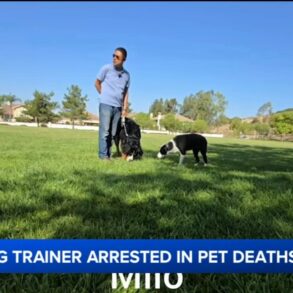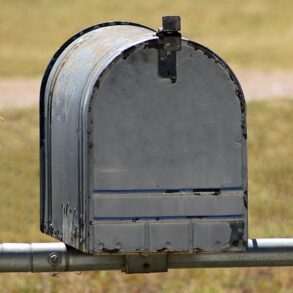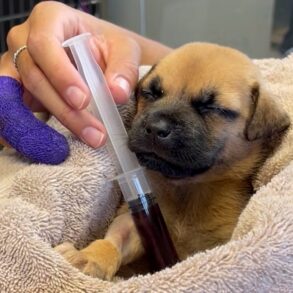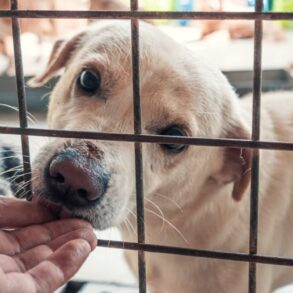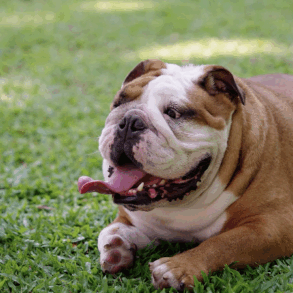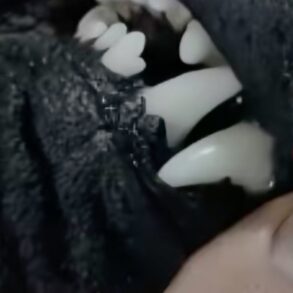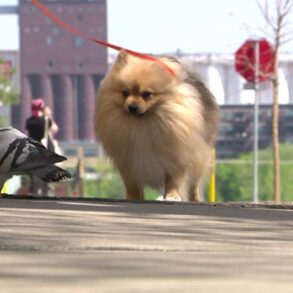It’d been quite a while since I had seen Lemon and Apple run, but dang if those pointers didn’t look good. One look at their chiseled muscles flexing and extending as they hunted their way out, and you’d swear we were judging a body builder’s competition. They were so jacked up that I could feel their drive, power, and intensity in every movement—and this was just at the start. Once their excitement burned off, and they settled in to go to work, we were going to see one outstanding performance.
Advertisement
A quail whistled, ‘Bob-WHITE!’ in the field below the pond. From the sounds of it, there was a covey somewhere in between the pearl millet, lespedeza bicolor, and Johnson grass. I looked around to whistle the dogs, but hell if they weren’t already there.
Bob shook his head and mumbled so much that I thought he was speaking in tongues.
“What’s that you’re saying, Bob?” I said.
“The owner had that pair neutered,” he said. “Ever since, they haven’t been worth a lick. It’s a shame, especially because they used to be nice dogs.”
Advertisement
Over the years, I’ve made similar proclamations about the impact of spaying or neutering on gun dogs. Like Bob’s, my view has been strong, it’s been firm, and until now, it has remained unchanged. But here’s the thing: my view has been based on observations of my own string, just as it has been shaped by my hunting buddies, pro trainers, breeders, and everyone else with whom I’ve worked. Unless there was a medical reason, every male and female dog in my string has remained intact. If performance wasn’t up to speed, then it wasn’t a result of spaying or neutering. There isn’t an abundance of scientific research that proves that spaying or neutering reduces performance. Let’s look at some of what we do know, with the goal of it adding some ballast to our passionate discussions of the subject.

Spaying and Neutering, what Does it Change?
Dr. Johnny Myers has owned bird dogs and retrievers his entire life. He’s also the owner of the Animal Kare Clinic in Paducah, Kentucky, and a Eukanuba Pro Veterinarian. As a result, Dr. Myers focuses a lot of his attention on gun dogs. And just like so many of his colleagues who are scientists, researchers, and other veterinarians, Dr. Myers doesn’t see enough evidence that spaying and neutering impacts a gun dog’s performance.
“I can see why owners and handlers would be concerned about the procedures,” he said. “Some of that may come from the fact that the surgery is irreversible. In neutering, the male dog’s testicles are removed. They drop into their normal position when the pup is between six and eight months of age and produce both sperm and testosterone. The sperm is used to fertilize eggs and create puppies, while the hormone testosterone contributes to the dog’s physicality and behavior. Male dogs are taller than females, they have bigger heads, and, if they are a long-haired breed, their coats are much thicker. Testosterone contributes to bone density, muscle mass, fat distribution, and all other masculine attitudes and characteristics. Male dogs have a more consistent level of activity and are always ready to work. It’s easy to understand why owners would think performance would be reduced after surgery.
“With spaying, the female’s ovaries, fallopian tubes, and uterus are removed. The ovaries produce the hormones estrogen and progesterone. Estrogen stimulates ovulation, which is the release of eggs from the ovary. Progesterone gets the uterus ready for pregnancy. It also helps mammary glands produce milk, along with other female characteristics, some making the female attractive to the male.
Advertisement
“There has been quite a lot of research on spaying and neutering, and a lot of it goes back to the 1960s.There isn’t a lot of research with regards to its impact on canine athletes, and what has been done tends to be breed specific. That type of study is very insightful and useful with regards to a particular breed. But it’s challenging to take a thorough body of research conducted on a golden retriever or a vizsla and use it to make clear connections with regards to other breeds. I’d love to see more research devoted to the subject.”

Does Spaying or neutering Effect Dog Performance?
Dr. Christine Zink, D.V.M, Ph.D., is a scientist who has spent a lot of her career studying performance dogs. Zink is a regular participant in hunt tests and all-breed sporting competitions, and she has looked at how spaying and neutering effects a canine athlete.
“Spaying or neutering does modify the behavior of a dog, especially if the procedure is done at an early age, before bad habits are allowed to develop,” she said. “In general, neutering makes male dogs less aggressive toward other males and, of course, decreases their interest in female dogs. Spaying prevents a female dog from experiencing the changes in temperament associated with heat cycles. Spaying or neutering does not cause a dog to become overweight, but the dog may require less food to maintain its body weight and therefore is more likely to be overfed.”
Some performance signs are immediately visible. A female in heat is focused on breeding, and her attention towards performance or competitive tasks is lessened. Similarly, male dogs in the area of a female in heat are less interested in performance or competitive tasks because they are focused on breeding. Spayed or neutered dogs have that element of distraction removed, which means they’re likely to perform better. Females in particular will have a level of consistency that doesn’t disappear during a twice-annual heat cycle.
But does that behavioral change reduce performance? Science does not prove that it does. “Some people believe that the male hormones help a dog in athletic competitions, which require a great deal of physical stamina, and owners resist neutering for that reason,” Zink said. “Whether to spay or neuter a dog must be decided based on the behavior, health, and performance requirements of each dog, and is up to the owner.” That also contributed to Bob’s rub as he favored Lemon and Apple’s performance before their procedures. He had an “ain’t broke so don’t fix it” view.

How Old to Spay or Neuter Hunting Dogs
Where Zink and other scientists have noted a negative impact on performance is at which age a puppy is either spayed or neutered. One long-held belief was that puppies should be spayed or neutered when they were young, and preferably before they reached puberty (puberty typically occurs between six and eight months of age). That idea has been challenged, with studies showing that early spaying and neutering alters the pup’s normal growth and development rates, and that it has an impact on the skeletal system, as well as on tendons and ligaments. Issues with cancer arise later in life, too.
Skeletal Issues from Early Neutering:
Here are the results of three studies regarding the impact of early spaying and neutering on orthopedic issues.
- One study conducted by KR Salmeri, MS Bloomberg et al titled Gonadectormy in Immature Dogs: Effects on Skeletal, Physical and Behavioral Development, researched the proper age that a dog should be spayed or neutered. 32 pups were selected, and one group was fixed at seven weeks, a second group at seven months, and a third group was left intact. The closing of growth plates occurred much later in the puppies spayed and neutered at seven weeks, resulting in puppies that grew significantly taller and had longer limbs, and thinner bones, than the intact dogs.
- In another study of 203 agility dogs, Zink observed that pups that were spayed and neutered before reaching puberty had leg bones that grew disproportionately. In the sample set, the tibia, radius, and ulna were significantly longer than normal, while the femur and humerus grew to a normal length. With lower leg bones growing disproportionate to upper leg bones, a skeletal imbalance is created. A wide range of bone, tendon, and ligament injuries can occur to performance dogs.
- Height differences were observed in a study of 1,444 golden retrievers. Those spayed or neutered when they were under a year old were taller than those spayed or neutered after they were a year old.

Cancer in Neutered and Spayed Dogs
Studies on the impact of spaying and neutering and the incidence of cancer, vary dramatically.
- In Zink’s study of 2,505 vizslas, spayed and neutered dogs of any age showed much higher risk of mast cell cancer, lymphoma, and other cancers. The younger the age of spaying or neutering, the younger the age cancer was identified in the dog.
- Brown University in Rhode Island recently indicated that spaying and neutering can reduce cancer of reproductive organs. Females saw a significant reduction in uterine, ovarian, and mammary cancers, while males saw a big drop in prostate cancer.
- Other physical issues besides cancer can be avoided by spaying or neutering. In females, pyometra, which is a life-threatening infection that causes the uterus to be filled with bacteria, is avoided in spayed females. This disease is more common in middle-aged to older females that have had several heat cycles.
“There are more studies than these, but they all indicate that spaying and neutering should be done when the patient is older,” Myers said. “In my clinical experience, I recommend that the female should go through at least one and preferably two heat cycles, so she should be between 16 and 18 months old. Males should be over a year old.”

How Does Spaying and Neutering Effect Attitude?
Over the years, a lot of studies indicate that spaying and neutering dramatically alters dog behavior. But a recent 2021 study, the Influence of Gonadectomy on Canine Behavior, examined 96 dogs with half of the dogs (48) serving as a control group. After spaying or neutering, some behavior changes were noticed, especially in males. Post-surgery, males surveyed nine months after the procedure showed a 17 percent reduction in barking, a 13 percent reduction in roaming, a 14 percent drop in pulling against a leash, a 27 percent drop in owner-directed aggression, and a 6 percent reduction in aggression towards other dogs. Studies between the 1970s and 1990s showed that castrated male dogs marked less, but that trend wasn’t noticed in 2021.
In the past five decades, a significant amount of research has been done on the topic of spaying and neutering dogs. More research on how those procedures impact the performance of athletic dogs would be beneficial. It’d be a welcome addition to a lot of the groundbreaking work that Christine Zink and her colleagues have begun. I’d welcome it, especially because it would replace some of my opinion-based views with facts.
This post was originally published on this site be sure to check out more of their content.



